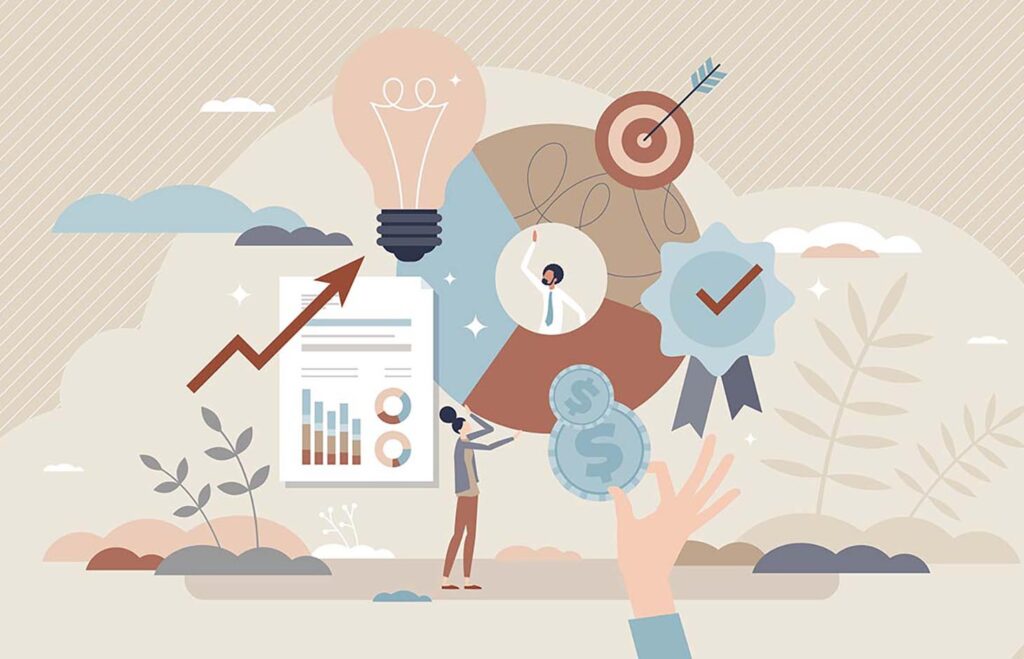In the world of SaaS, so much focus is given to customer acquisition that the value of existing customers is often inadequately emphasized. In fact, at least 30% of revenue should be coming from current accounts.
Businesses operating in the SaaS niche wishing to establish dependable recurring revenue must build a business model around satisfied customers. Not only does this mentality reduce revenue-killing customer churn but it can also actively enhance monthly recurring revenue (MRR).
Satisfied customers spend considerably more and can often account for up to 80% of a business’s revenue.
It’s all about making sure your customers receive the value they are paying for. With the right strategy, you can maximize customer satisfaction and reap the rewards that follow.
Customer success teams are an integral part of securing annual recurring revenue
In a world where, as Jerry Gregoire of Dell puts it, “Customer experience is the next competitive battleground,” a strong CS team is a non-negotiable element of securing future revenue.
To keep customers coming back on a monthly basis and providing that predictable revenue, SaaS businesses must empower their CS team with the means to ensure their customers achieve results quickly and decisively. Let’s take a look at a few methods designed to benefit customers and SaaS companies alike.
1. Secure MRR quickly by acting fast
Making a sale often carries a feeling of finality. You’ve brought the customer in and now it’s the product’s job to keep them there, right? Not quite.
In fact, a customer’s initial experiences with new software are often challenging, and if things become too difficult, they’re liable to stop using it. More than half of all consumers report abandoning a product because they couldn’t figure it out. In other words, complicated products that come with inadequate instruction might experience high levels of churn that can be fatal to recurring revenue models.
On the other hand, another 86% say they are more loyal to businesses that actively invest in introductory materials that are welcoming and educational.
A good onboarding strategy can make all the difference. For best results, it helps to have CS ready to take over the moment you close a sale. Depending on the nature of your product, it might also be handy to have a library of self-educational materials available for your customers to access at their leisure.
While every business develops its own set of most important metrics for what onboarding should accomplish, the goal should always be good customer outcomes.
Sometimes the process can be quite involved. Slack is a good example. There, paying users have not been properly onboarded—by the company’s standards, at any rate—until they have exchanged 2000 messages.
Stewart Butterfield of Slack says the reason behind this strategy is simple: “Regardless of any other factor, after 2,000 messages, 93% of those customers are still using Slack today.”
To develop the right onboarding strategy for your business, first:
- identify a CS metric that correlates with high levels of retention,
and then:
- develop a streamlined strategy to help new customers reach that metric quickly.
2. Create a business model that helps customers get their first win early
The process by which a customer adopts a new product can be divided into three parts:
- Discovery: Through advertisements, word of mouth, and the efforts of your sales team, potential customers find your product and begin to develop ideas about how it might be useful to them.
- Activation: The customer likes what they’ve seen so much, they decide to give your product a try. They sign on and begin the onboarding process. Consequently, they begin to generate recurring revenue for your business.
- Implementation: The customer uses your product regularly. Not only do they become loyal, they also grow receptive to account upgrades and feature expansions. Customer retention is cemented. Cross-selling opportunities emerge. Customer lifetime value increases.
What takes paying users from point one to point three? Wins. To turn prospective customers into long-term contracts, you need to not only show them the value of your product but help them experience it as quickly as possible.
While hunting for “wins” may sound imprecise and perhaps unpleasantly like Charlie Sheen in 2011, good data implementation can actually paint a vivid portrait of what to do.
For example, using historic customer data, you can:
- Examine how successful customers used your product. Was there a certain feature they used? How did they respond to the onboarding process?
And:
- Perform post-mortems. What went wrong with churned customers? Were they not adequately onboarded? Did they simply not use the product often enough to realize its value?
With this intel, you should be able to identify the moment a customer clicks with your product. For example, if you are an e-commerce platform, you might find your new customers tend to stick around once they’ve uploaded their first product.
Knowing this, you can craft a communications campaign that encourages customers to regularly update their product catalog. As they continue to use your software, you can reward their engagement by acknowledging milestones.
As the customer experiences “wins”, they become increasingly more aware of the value your product provides them. This allows you to both minimize churn and keep more customers engaged with your product.
3. Solidify monthly recurring revenue by proving your worth
Experience is great, but hard numbers can be even better. Quarterly or monthly meetings with customers are a great way to maintain contact, demonstrate how they’ve benefitted from your product so far, and potentially enumerate ways they can advance those benefits in the future.
This might mean explaining ways they can improve their implementation of existing features, or it could mean explaining your own product development roadmap. Learning about upcoming features can potentially help customers decide to stick around when it comes time to renew.
Regular meetings can also provide an invaluable opportunity for feedback.
Good onboarding depends on getting inside the customer’s head and viewing your product through their eyes. Hearing their concerns enables that opportunity while also helping the customer feel recognized in the process. More than 80% of consumers report feeling more loyal to businesses that listen to and address their concerns.
Satisfied customers are key to the recurring revenue business model
The best product in the world is only as good as it is usable.
As Warren Buffet puts it, “Price is what you pay. Value is what you get.” Naturally, customers want to experience as much value as possible. However, there are limits to the lengths they will go to achieve it.
The monthly recurring revenue model makes it very easy for consumers to seek new software solutions. The world of subscription-based software services is a broad market, with a relatively high degree of options. Customers are invited to reconsider their business decision in regular intervals and when one product or service isn’t working the way they expected to, they’ll move on to its competitor.
By helping your customers find success quickly you not only eliminate one-time sales but also cement a predictable cash flow that can continue for years.
FAQs about Maximizing Recurring Revenue
Q: What is the significance of customer satisfaction in maximizing recurring revenue for SaaS products?
Customer satisfaction significantly influences recurring revenue in the SaaS business model. Satisfied customers tend to spend more, accounting for a substantial part of the business’s revenue. Ensuring customers receive the value they pay for can enhance monthly recurring revenue.
Q: How does customer experience impact a SaaS business’s revenue?
A customer’s initial experience with new software can be decisive for customer retention and revenue generation. Complex products with inadequate instruction can lead to high churn levels, negatively impacting recurring revenue models. Conversely, businesses investing in welcoming and educational introductory materials can enhance customer loyalty, boosting their recurring revenue.
Q: What role does a Customer Success (CS) team play in maximizing recurring revenue for a SaaS product?
The CS team is crucial in retaining customers and ensuring recurring revenue. By empowering the CS team to support customers in achieving results quickly with the product, businesses can enhance customer satisfaction, indirectly increasing their recurring revenue.
Q: What is a good onboarding strategy for a SaaS product, and how does it influence recurring revenue?
A compelling onboarding strategy involves immediate engagement by the CS team after making a sale and providing self-education materials based on the nature of the product. The goal of onboarding should be achieving good customer outcomes, which in turn increases customer satisfaction and contributes to recurring revenue.
Q: What does the customer adoption process for a SaaS product entail, and how does it aid in maximizing recurring revenue?
The customer adoption process involves three stages: Discovery, Activation, and Implementation. Throughout this process “wins” or positive experiences, encourage customer retention and openness to account upgrades and feature expansions. This journey not only cements customer retention but also increases customer lifetime value and potentially recurring revenue.
Q: How can data from past customers help improve a SaaS company’s recurring revenue?
Historic customer data can provide insights into how successful customers have interacted with the product and responded to the onboarding process. It can also reveal why certain customers churned. With these insights, businesses can identify success factors and problem areas for customers, which can then be leveraged to minimize churn and engage more customers, thus boosting recurring revenue.
Q: What role do regular meetings with SaaS customers play in maximizing recurring revenue?
Regular meetings with customers help maintain engagement, demonstrate product benefits, and explore further utilization options. They also provide an opportunity for gathering invaluable customer feedback – a critical element for successful onboarding and maximizing recurring revenue.
Q: How does usability influence the recurring revenue of a SaaS product?
Usability is crucial as a product is only as good as it is usable. If a product or service isn’t working as expected, customers may shift to competitors, especially in the subscription-based SaaS model. Ensuring that customers find success quickly can cement recurring revenue.
Q: What strategies can SaaS businesses adopt to maximize their recurring revenue?
Strategies may include building a business model around satisfied customers, investing in a strong customer success team, developing an effective onboarding strategy, using historic customer data to boost sales and customer retention, and maintaining regular communication with customers.







